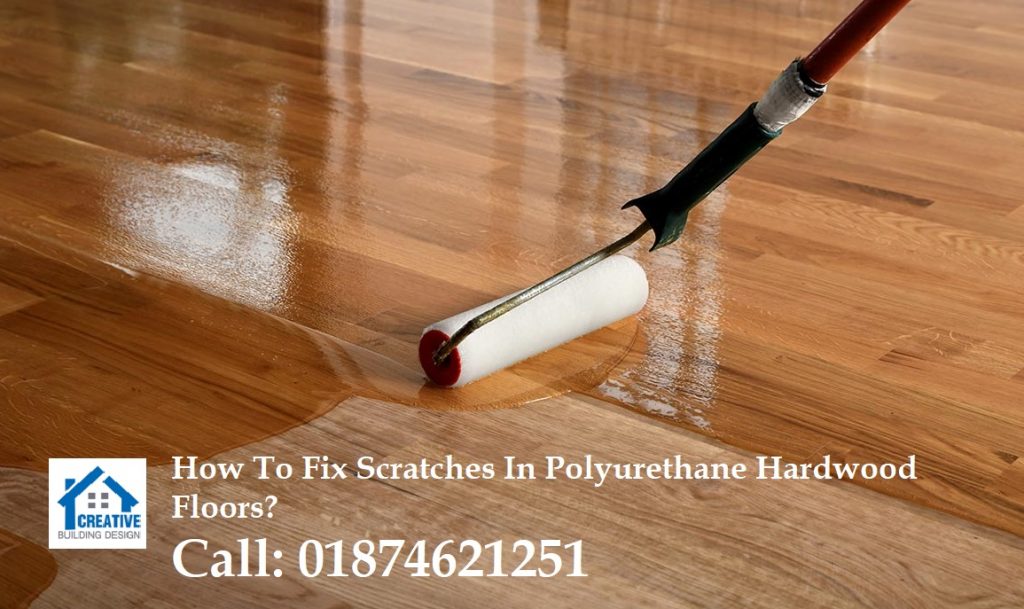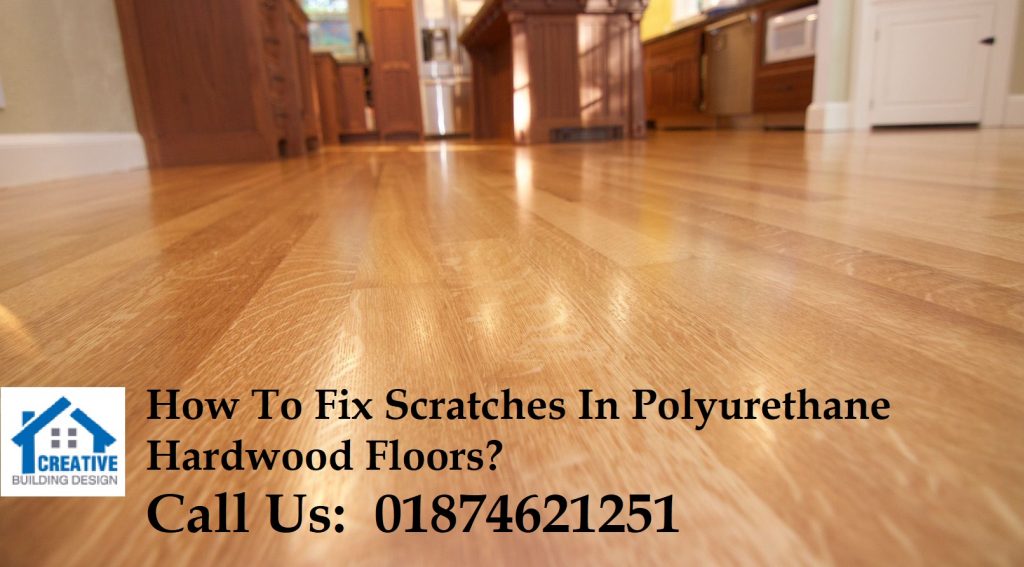
Scratches on hardwood floors decrease floor beauty and appeal. Scratches also can attract dirt, dust and stains. This guide help you to fix scratches in polyurethane hardwood floors.
First, identify the type of scratches it is. Here are some scratch types:
Polyurethane scratches can be severe since polyurethane is a material that doesn’t like friction. These scratches are made by a number of items. First, it is sometimes caused by shoes stepping across the floor. Second, it may also be made by furniture or people dragging them across the floor with nails or feet. This guide help you to fix scratches in polyurethane hardwood floors.
Contents
What Finish Is On Your Floor?
Before fixing the scratches in polyurethane hardwood floors you should know which one was used on your floor. Most common polyurethane floors are:
- Varnish
- Stain
- Oil-based polyurethane
- Water based polyurethane
How To Fix Scratches In Polyurethane Hardwood Floors?
Identify type of scratch:
To fix scratches in polyurethane hardwood floors for the first step, determine which type of scratches it is. Scratches on hardwood floors can be caused by people stepping on them or cause by furniture or nails. If a person steps on your floor and they have shoes, they will start to wear out the bottom of their feet.
Scratching Type 1: Nail Scratches:
Even though hardwood floors are durable, they are not completely scratch resistant. The nails may leave scratches. Even though nail scratches on hardwood floor can be cured, they are not recommended to use because most nails are not made of stainless steel. Stainless steel nails are highly scratch resistant and durable for long term use. For the additional protection of your floor, you should use them.
Scratching Type 2: Shoes Scratches:
The second type of scratch your floor can get from shoes is the shoes scuffs . The size, shape and wear and tear of shoes are all factors that affect the appearance of your floor. Shoes scuffs tend to be deeper than a nail scratch, which makes them difficult to fix. You should buy shoes that are evenly spaced and have replacement heels . This will make it easier to find the right shoes for your floor and avoid unnecessary wear on your floor.
Scratching Type 3: Furniture Scratches:
Another type of scratch your floor may suffer from is the furniture scratches. Just like the previous two types, furniture can damage your floor and make them look bad. The worse part is that furniture scratches sometimes last longer than other types of scratches. To prevent this you should use pads on all legs or legs with nails or wooden feet.
Clean the floor:
Some dirt and dust can get trapped in the floor, which may even make the scratches worse. You should sweep or vacuuming the floor first. Use a dustpan to pick up any loose dirt or leaves. Dustpan is more convenient than broom because the dustpan can easily pick up small scraps of wood and other debris without leaving traces on your floor.
Apply wax on floor:
After sweeping or vacuuming the floor, you should put a coat of paste wax on it. Wax will help to make the scratches less noticeable. It will also help to keep your floor shiny and clean.
Sand the surface:
You should use a medium-grain sandpaper to smooth the surface of your floor. This will remove the top layer of polyurethane, which will make the scratches less visible on your floor.
Use compound:
You should use a fine-grained sandpaper to even out the scratches. The compound you use should be made for wood floors and not paint. You may need to repeat these next two steps until the scratches are gone.
Apply spot finish:
After grinding and sanding, you should use a spot finish on your floor. This finish is very bright and hard that it will make the scratches stand out. You only need to apply it on scratches that are still visible.
Conclusion:
Once the scratch has been fixed and blended, you should use a buffing pad to smooth the surface. You should apply a coat of clear wax on the floor, which will help in the future to protect your floor. The main advantage of using this method is that it is cheap and fairly simple to do.
Related Post:
- PU Flooring in Bangladesh
- Pu Industrial Flooring Bangladesh
- How To Apply Polyurethane To Floors?
- Will Polyurethane Fill Cracks In Wood Floor?
- How To Prevent Bubbles In Polyurethane Floor Finish?
- How To Get Rid OF Polyurethane Smell From Floors?
- How To Remove Scuff Marks From Polyurethane Hardwood Floors?
- How To Care For Polyurethane Wood Floors?
- How To Roll Polyurethane On Floor?

